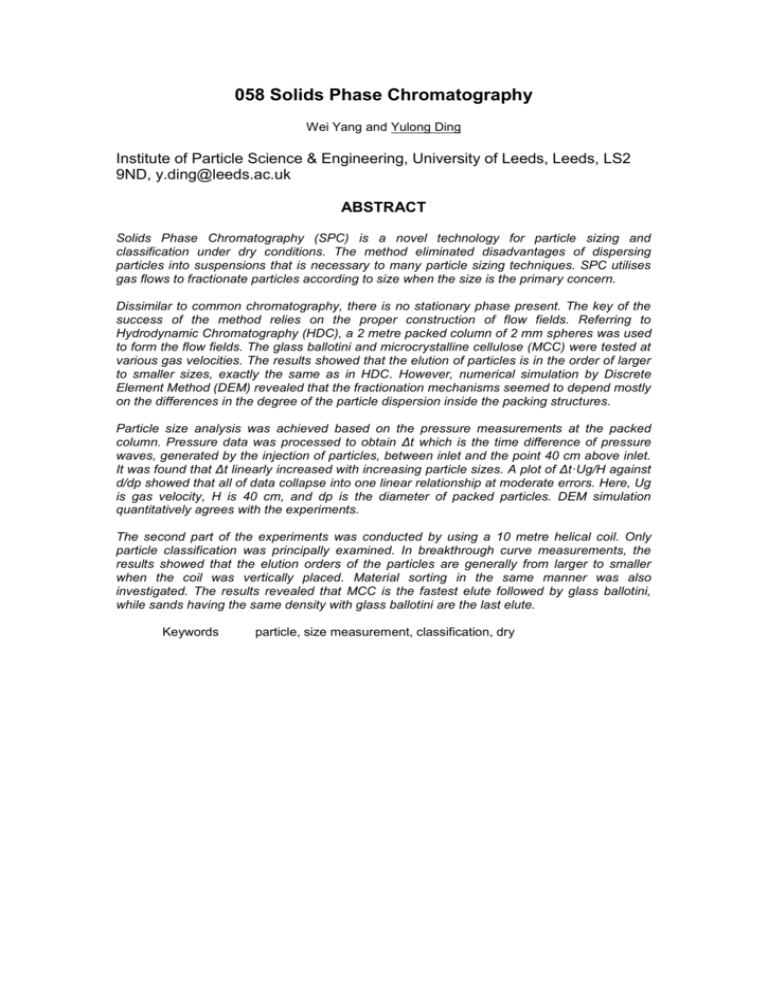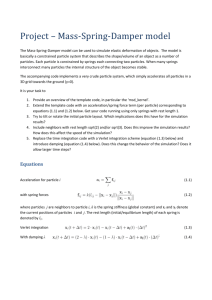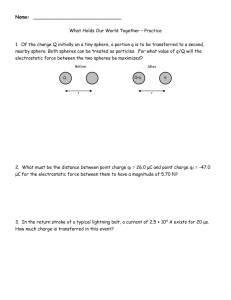Solids Phase Chromatography
advertisement

058 Solids Phase Chromatography Wei Yang and Yulong Ding Institute of Particle Science & Engineering, University of Leeds, Leeds, LS2 9ND, y.ding@leeds.ac.uk ABSTRACT Solids Phase Chromatography (SPC) is a novel technology for particle sizing and classification under dry conditions. The method eliminated disadvantages of dispersing particles into suspensions that is necessary to many particle sizing techniques. SPC utilises gas flows to fractionate particles according to size when the size is the primary concern. Dissimilar to common chromatography, there is no stationary phase present. The key of the success of the method relies on the proper construction of flow fields. Referring to Hydrodynamic Chromatography (HDC), a 2 metre packed column of 2 mm spheres was used to form the flow fields. The glass ballotini and microcrystalline cellulose (MCC) were tested at various gas velocities. The results showed that the elution of particles is in the order of larger to smaller sizes, exactly the same as in HDC. However, numerical simulation by Discrete Element Method (DEM) revealed that the fractionation mechanisms seemed to depend mostly on the differences in the degree of the particle dispersion inside the packing structures. Particle size analysis was achieved based on the pressure measurements at the packed column. Pressure data was processed to obtain Δt which is the time difference of pressure waves, generated by the injection of particles, between inlet and the point 40 cm above inlet. It was found that Δt linearly increased with increasing particle sizes. A plot of Δt·Ug/H against d/dp showed that all of data collapse into one linear relationship at moderate errors. Here, Ug is gas velocity, H is 40 cm, and dp is the diameter of packed particles. DEM simulation quantitatively agrees with the experiments. The second part of the experiments was conducted by using a 10 metre helical coil. Only particle classification was principally examined. In breakthrough curve measurements, the results showed that the elution orders of the particles are generally from larger to smaller when the coil was vertically placed. Material sorting in the same manner was also investigated. The results revealed that MCC is the fastest elute followed by glass ballotini, while sands having the same density with glass ballotini are the last elute. Keywords particle, size measurement, classification, dry







